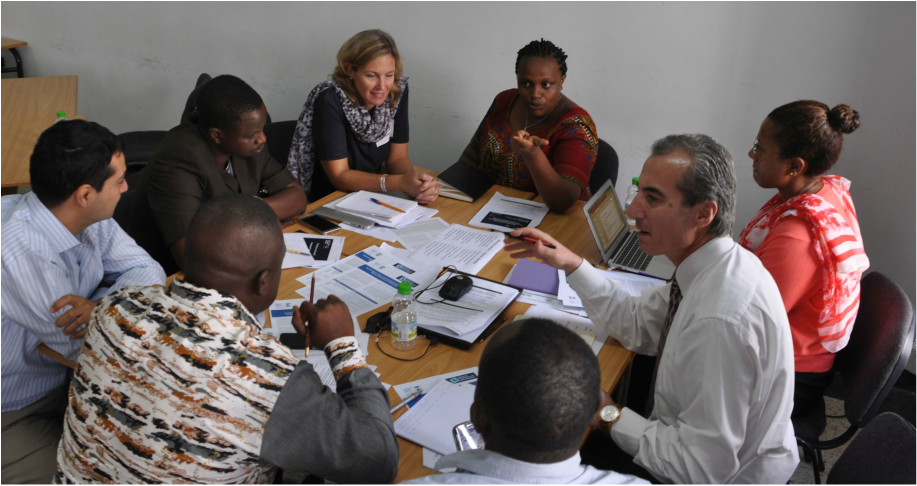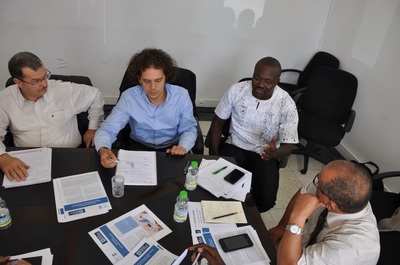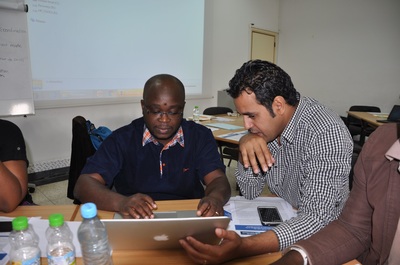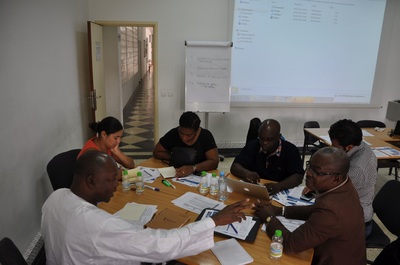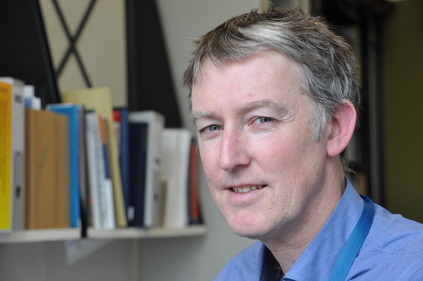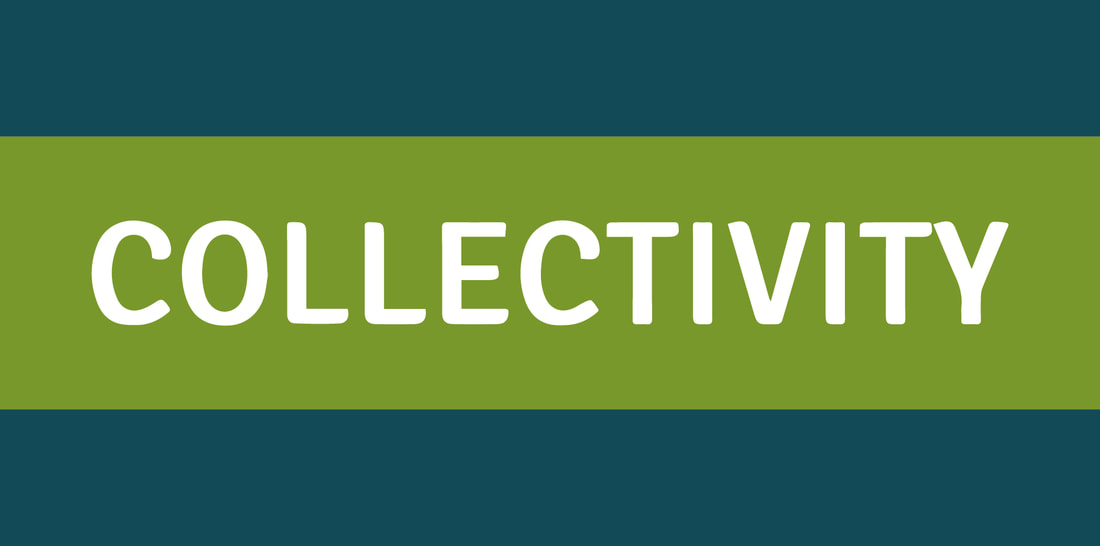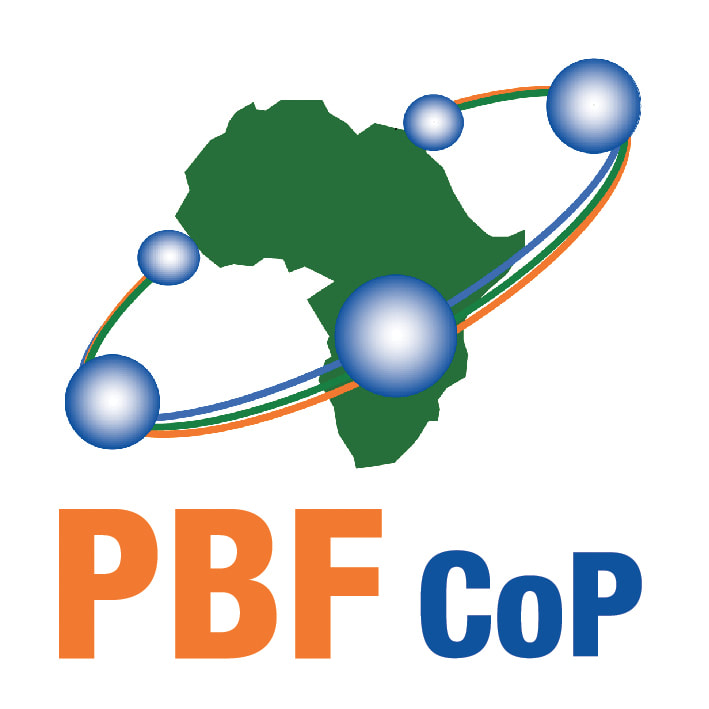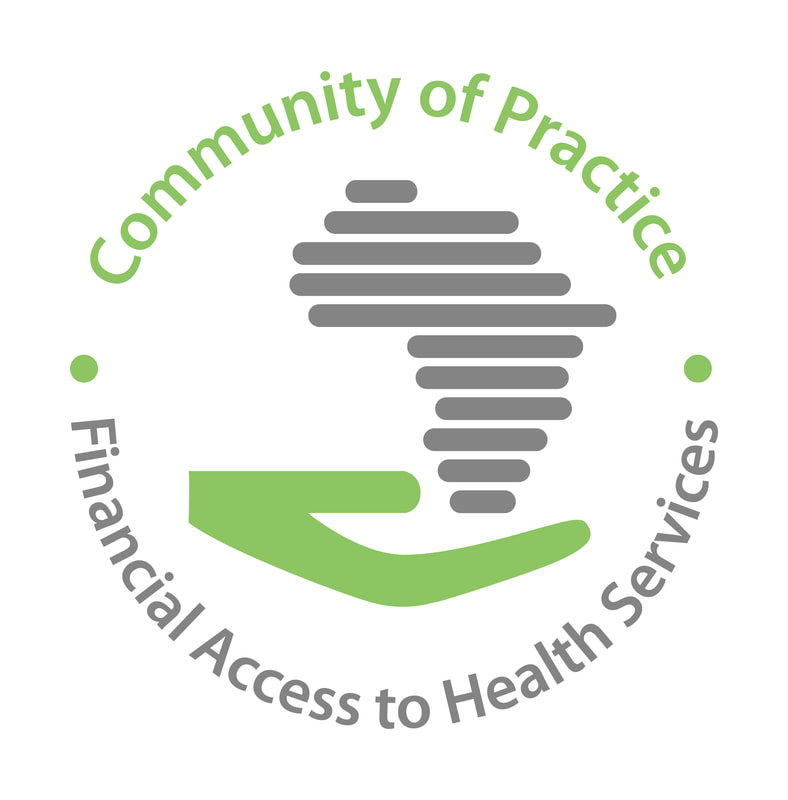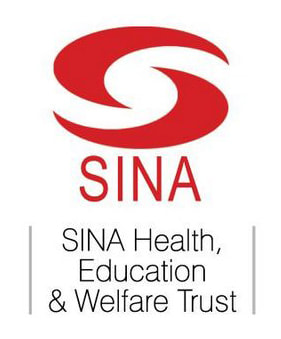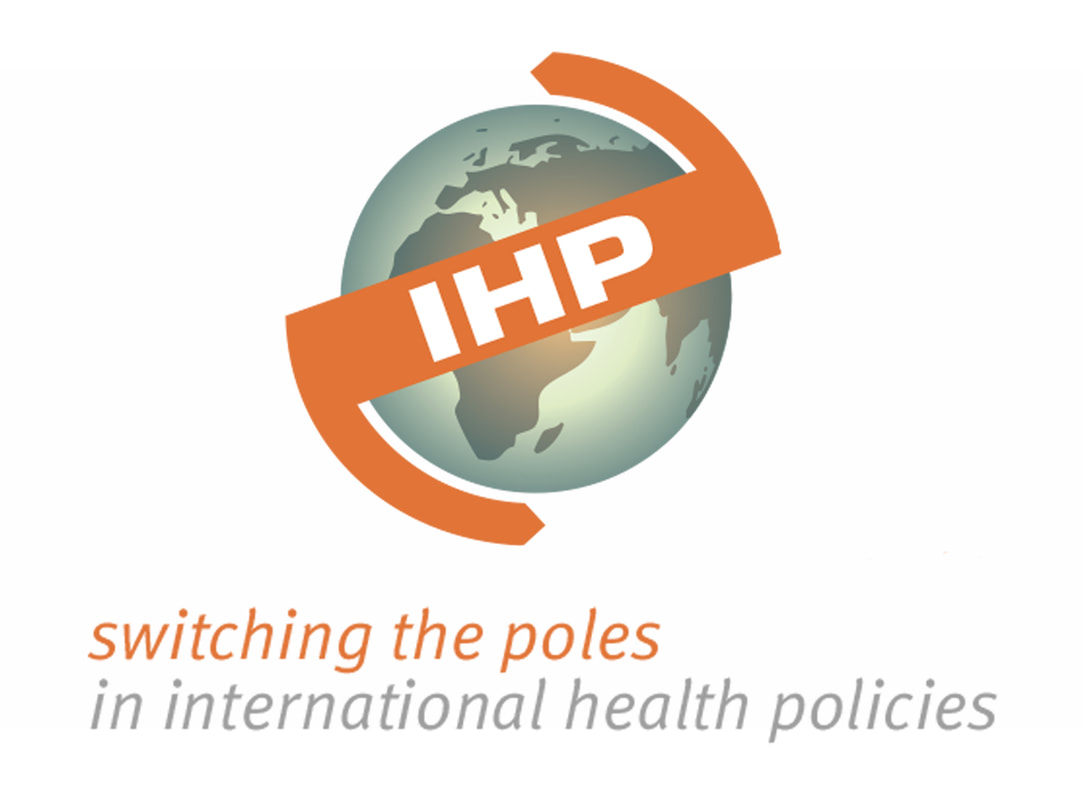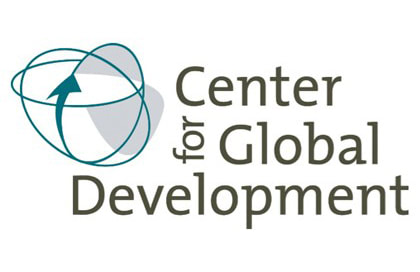
Jeune chercheur en économie de la santé, Hyacinthe Kankeu Tchewonpi a récemment soutenu sa thèse, intitulée Quatre essais sur l'économie des paiements informels dans les systèmes de santé africains, à l’Université d’Aix-Marseille. HFA l’a interviewé. L’occasion de nous pencher sur un aspect important mais peu exploré dans le contexte du financement de la santé en Afrique : la « petite corruption » dans les formations sanitaires.
Ton travail de thèse a porté sur la « petite corruption » (ou « paiements informels »), forme de « corruption bureaucratique », qui renvoie au fait que des agents publics, ici les personnels de santé, demandent des dessous-de-table aux patients. Quelle est l’ampleur du problème ?
L’ampleur du problème varie beaucoup d’un pays à l’autre. Par exemple, à l’Île Maurice et au Botswana, quand on regarde les chiffres des dernières enquêtes Afrobarometer, on a moins de 0,5% des individus qui déclarent avoir eu à payer des frais non officiels dans leurs structures de soins au cours des 12 derniers mois. Dans ces pays, le problème peut être considéré comme très marginal, voire inexistant. Par contre, au Maroc, en Egypte, en Sierra Leone, c’est au-dessus de 50%. Si une personne sur deux qui a eu recours aux soins dans le secteur public rapporte avoir dû payer des frais non officiels pour accéder aux soins, c’est très inquiétant. Il y a aussi des pays qu’on peut considérer comme intermédiaires. Il faut également préciser qu’il y a une forte corrélation entre « petite corruption » dans les systèmes de santé et le climat de corruption en général dans le pays. Lorsqu’on s’intéresse à l’indice de perception de la corruption de Transparency International, on constate que les pays les plus « propres » dans ce classement sont aussi ceux où on a de faibles pourcentages d’individus rapportant avoir payé des frais non officiels dans leurs structures de santé. On comprend bien que le système de santé n’évolue pas en vase clos, il est un peu le reflet de ce qu’est l’environnement du pays en général en termes de corruption.
Dans les pays où cette situation est installée, quelles en sont les conséquences principales et surtout qui sont les plus touchés par cette situation ?
En se référant à la littérature existante, les conséquences principales de ce problème sont de divers ordres en termes d’effets néfastes sur la qualité des soins, sur l’accès aux soins, sur l’efficience et sur l’équité. Pour ce qui est de l’accès aux soins, l’existence de frais non officiels constitue une barrière financière supplémentaire pour les patients, et il peut arriver que les patients les plus pauvres choisissent de ne pas recourir aux soins lorsqu’ils en ont besoin. A ce sujet, l’un des principaux résultats de ma thèse est que, dans le cadre des pays africains, ce sont les patients les plus pauvres qui supportent le poids le plus lourd en termes d’occurrence de paiements informels. Par rapport à la qualité des soins, lorsque les personnels de santé espèrent ou veulent pousser le patient à leur verser des dessous-de-table, ils peuvent être amenés à prodiguer des soins de qualité inférieure par rapport au standard, à rallonger les temps d’attente, à créer des pénuries artificielles de médicaments et autres intrants médicaux pour susciter l’intérêt du patient. Deux études (l’une qualitative et l’autre quantitative) menées notamment en Tanzanie mettent clairement en évidence ce type de comportement chez les personnels de santé. Pour ce qui est de l’efficience, l’idée souvent développée dans la littérature c’est le fait qu’à travers les paiements informels, on ne met pas de l’argent au bon endroit. Parfois, le personnel va prodiguer des soins non nécessaires pour obtenir un paiement additionnel et non pas pour le bénéfice thérapeutique que cela pourrait procurer au patient. Enfin, l’un des problèmes potentiels c’est que cela peut générer de la démotivation pour les personnels de santé. En effet, s’il arrive que dans une structure de santé, seul un type de soignants –par exemple les médecins – bénéficie de ces paiements informels-là, les autres catégories de personnels – les infirmiers par exemple – peuvent réduire leurs efforts et s’impliquer ou s’investir moins dans la prise en charge optimale des patients. L’étude qualitative que j’ai mentionnée précédemment en Tanzanie montre ce phénomène, avec des personnels de santé qui ressentent une sorte d’injustice dans la répartition des paiements informels. Voilà quelques exemples d’effets pervers que peuvent avoir les paiements informels sur le système de santé.
Dans ta thèse, tu présentes aussi des résultats théoriques assez paradoxaux quant à la relation entre salaires fixes et les paiements informels. Peux-tu nous expliquer comment tu arrives à ta conclusion ?
J’ai étudié, dans le cadre d’un modèle théorique, une fonction d’utilité des médecins qui dépend entre autres de leur rémunération officielle/formelle, d’un niveau de paiement informel qu’ils pouvaient tirer des patients, et du nombre de patients reçus au cours d’une période. Dans la littérature et dans le débat public, il est souvent dit qu’une augmentation des salaires permettrait que le problème de corruption soit sinon éradiqué, au moins réduit. J’ai considéré trois types de rémunération officielle : au salaire, que l’on rencontre dans la grande majorité des pays africains, une à la « production », au sens où le médecin reçoit un montant forfaitaire par patient reçu pendant la période, et le troisième, un mode de rémunération mixte. L’analyse du modèle économique proposé montre que dans la situation d’équilibre, le niveau de paiement informel est plus élevé lorsqu’on a une rémunération au salaire par rapport aux deux autres situations. De plus, dans le cas du salariat, une augmentation du salaire ne conduit pas à une réduction de la « petite corruption », c’est plutôt l’effet inverse qui est observé. L’explication est que l’augmentation (seule) du salaire génère des incitations négatives pour le médecin en termes d’efforts. Pour réduire son effort, l’idée est de recevoir moins de patients, et pour cela, il va leur envoyer un signal négatif en augmentant le niveau de paiements informels qu’il pratique. Avec la rémunération à la « production », on observe que si l’on augmente le paiement unitaire par patient, on a une diminution du niveau de corruption. L’explication ici est que le médecin a une incitation à accroître son effort, puisque le paiement unitaire introduit un mécanisme de prix dans le système et conformément à la loi traditionnelle de l’offre, lorsque le prix augmente, le producteur (ici le médecin) augmente sa production (ici le nombre de patients reçus). Pour recevoir plus de patients, le médecin va leur envoyer un signal positif en réduisant le niveau de paiements informels pratiqué, d’où l’effet observé. Je précise toutefois qu’au final, en tenant également compte de la contrainte de participation des médecins (c’est-à-dire leur attrait pour chacun des modes de rémunération) c’est la rémunération mixte (une part de salariat et une part de rémunération à la « production ») qui apparait comme étant la plus appropriée pour le décideur. Ainsi, il pourrait être judicieux de réviser les modes de rémunération des personnels de santé dans nos pays pour non seulement les adapter au coût de la vie mais aussi mieux lier cette rémunération à leur activité réelle, à leur effort.
Tu te rapproches ainsi des Financements Basés sur la Performance qui se développent en Afrique.
C’est vrai que le deuxième mode de rémunération (la rémunération à la production) dans ce modèle théorique peut être vu comme une forme basique de rémunération au résultat. Après il serait intéressant de regarder l’aspect qualité pour se rapprocher véritablement des approches PBF, car dans cette analyse, par souci de simplicité, la qualité des soins a été considérée comme fixe et identique pour tous les patients. Je pense que ce travail est une première contribution qui permet d’apporter une justification a priori, théorique, de l’intérêt que l’on peut avoir à adopter des mécanismes de financement/rémunération au résultat ou plus loin à la performance. C’est une contribution qui peut appuyer le plaidoyer des experts africains notamment qui essayent de convaincre leurs gouvernements ou les partenaires au développement pour la prise en compte de cette approche-là en tant que réforme des systèmes de santé.
Ton travail est précurseur à plusieurs niveaux en cherchant à comprendre les diverses dimensions de ce problème de « petite corruption » en Afrique. Tu montres ainsi que les déterminants de ce phénomène sont tant du côté de l’offre que de la demande. A partir de là, quelles interventions pourraient être mises en place afin de réduire la part des paiements informels dans les systèmes de santé en Afrique ?
Dans l’absolu, tous les facteurs que j’ai identifiés dans la thèse pourrait chacun être l’objet d’une intervention. Je pense que l’une des premières choses, c’est la nécessité d’améliorer la protection financière des patients, et notamment des plus pauvres lorsqu’ils ont recours aux soins. Ça peut passer par des mécanismes d’assurance maladie ou par des systèmes de bons (vouchers). Une autre intervention pourrait être au niveau des conditions de travail dans les structures de santé. J’ai aussi démontré que des problèmes comme l’absentéisme des personnels soignants et les ruptures de stocks des médicaments et autres intrants médicaux sont très fortement liés à la survenue des paiements informels. Quand il y a de la rareté, le prix devient plus élevé et cela peut se manifester via des paiements informels. Lorsque les patients ont des temps d’attente très élevés, ils vont avoir tendance à payer plus pour avoir accès plus rapidement aux soignants. Relativement à ce point, l’une des choses qui serait intéressante à évaluer, dans la mesure où elle est déjà adoptée en tant que politique nationale dans plusieurs de nos pays notamment dans la prise en charge du VIH/Sida, c’est l’effet de la délégation de tâches (le fait de faire réaliser par des infirmiers certaines tâches normalement dévolues aux médecins, pour pallier au problème de pénurie des ressources humaines). Du côté des patients, il y a un problème d’information par rapport à leurs droits et sur le tarif réel des services (les frais officiels) dans les structures de santé. Des études montrent que lorsque les tarifs sont affichés dans le bureau du médecin, dans la salle d’attente ou le couloir, on réduit significativement les risques de survenue des paiements informels. Je pense également qu’il pourrait être intéressant de mettre en place un système pour que les patients rapportent des éventuels cas de corruption et qu’il y ait une application stricte de sanctions contre les personnels fautifs. Le fait que l’on sanctionne très peu les actes de corruption dans la pratique, en dépit des textes légaux et réglementaires qui très souvent prévoient des sanctions, est aussi – et malheureusement – un facteur qui favorise l’existence et l’expansion de ce fléau de manière générale dans nos pays. On pourrait imaginer une étude où, dans certaines structures de santé, on renforcerait l’information des patients, dans d’autres structures, l’on mettrait en plus en place un système pour rapporter les cas de corruption avec à la clé des sanctions effectives. Au bout d'un certain temps, on comparerait ces deux interventions à un troisième groupe de structures sans aucune intervention.
Quelles sont tes pistes de recherche désormais ?
De façon générale l’idée c’est de continuer à contribuer à enrichir la littérature sur cette problématique de paiements informels dans les systèmes de santé africains avec dans l’immédiat un intérêt pour la question du lien entre « petite corruption » et qualité des soins. Parce que dans les études qualitatives, l’une des raisons que les patients évoquent souvent pour le paiement des dessous-de-table est le souhait d’obtenir des soins de meilleure qualité. J’espère pouvoir produire des travaux qui seront utiles tant pour la communauté scientifique que pour les décideurs en essayant de répondre à la question de savoir si le fait pour les patients de payer des frais non officiels conduit véritablement à une meilleure prise en charge par personnel soignant.
Toute autre chose… Tu viens d’obtenir un doctorat en sciences économiques d’une université prestigieuse. Parmi nos lecteurs, certains aimeraient suivre ta trace. Aurais-tu quelques conseils à destination des experts africains qui souhaiteraient se lancer dans un doctorat ?
Je dirais que la première des choses est d’avoir une idée de sujet, pour qu’en commençant sa quête d’un directeur de thèse, la personne ait déjà une idée de thématique qui l’intéresse vraiment. Etant donné que le temps durant lequel on va se consacrer à sa thèse est relativement long (3-4 ans), si l’on n’a pas un intérêt personnel ou particulier à travailler dessus, cela va très vite devenir ennuyeux. Par la suite, essayer d’identifier des enseignants ou chercheurs qui pourraient être intéressés à encadrer les travaux envisagés en comparant par exemple leurs intérêts de recherche à la thématique que l’on a en idée. Aussi, un autre aspect important, c’est de se demander quel type de contrat ou de programme doctoral est adapté à sa situation. Le plus simple pour ceux qui souhaitent faire leur thèse tout en poursuivant leur activité professionnelle, je pense, c’est de choisir un sujet de thèse lié à leur travail de tous les jours et une fois l’encadrant trouvé, d’évaluer ensemble les diverses possibilités pour la mise en route de la thèse (choix du programme, procédures administratives, financement, planification du travail, etc.). Pour finir, j’encourage vivement ceux qui ont en idée de faire un doctorat mais qui ont des doutes, d’en discuter par exemple avec les universitaires qui sont membres de cette communauté de pratique.
Les travaux de Hyacinthe ont été publiés dans plusieurs revues scientifiques. Vous pouvez accéder à son étude sur la petite corruption dans les systèmes de santé de 33 pays Africains ici et à son étude sur le cas des patients VIH au Cameroun ici. N’hésitez pas non plus à contacter Hyacinthe directement en cliquant ici.
